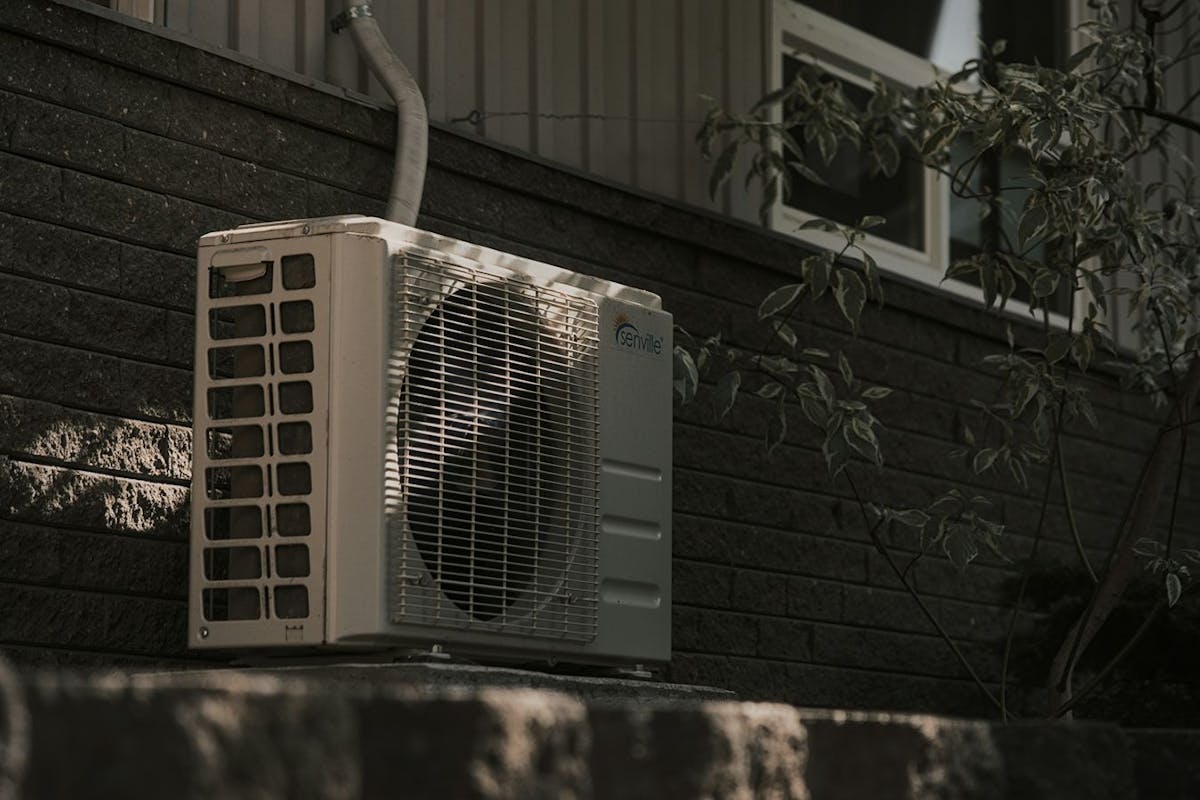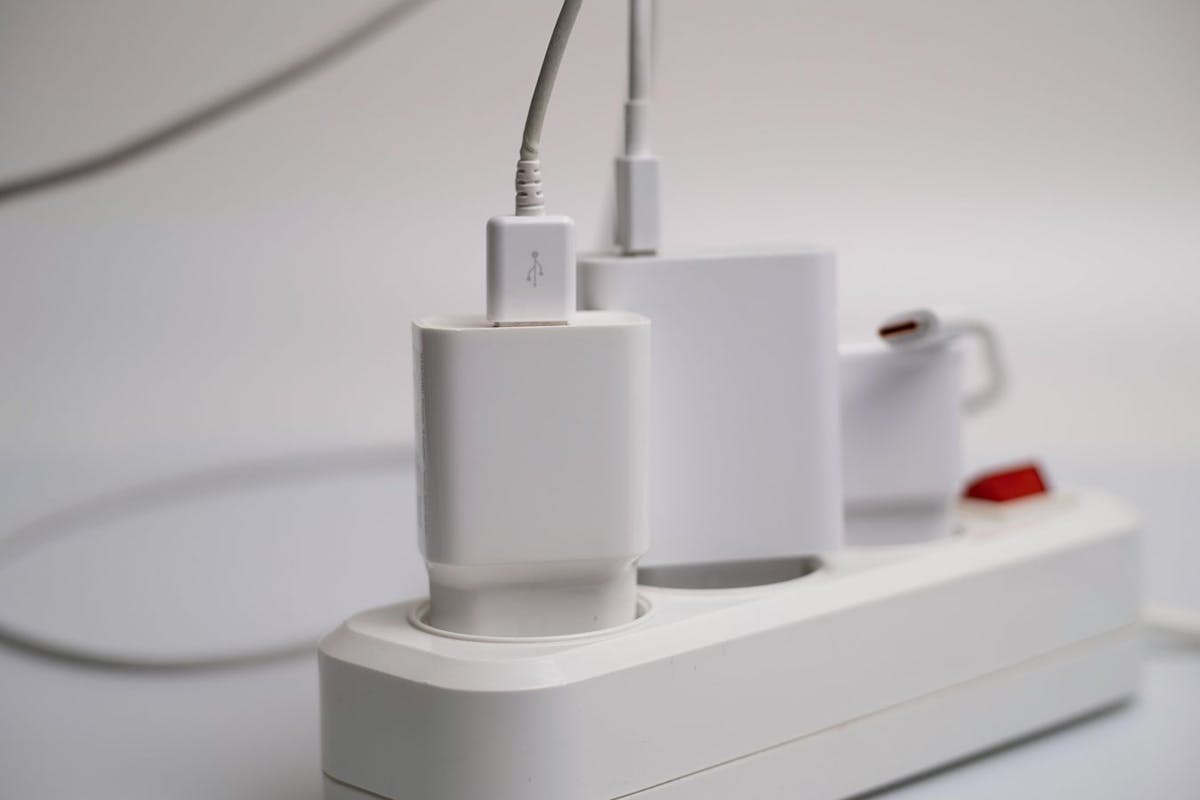Vampire Energy: What It Is and How to Stop It
Last edited

Author
Andrew Giermak
Solar and Electrification Writer and Editor

Editor
Andrew Blok
Electrification and Solar Writer and Editor

Vampire energy and phantom power sound scary. And they might be, depending on how scared you are of a high electric bill.
If you’ve got electronics, appliances, and consoles, with a standby mode, heck, even a 40-year-old VCR with a blinking clock, you’re a victim of vampire energy. Those devices are using power even when you’re not making coffee, charging a phone, or, playing a cassette tape? Has that blinking clock been using power for years?
Vampire energy accounts for up to 10% of the electric usage for the average American household, according to the Lawrence Berkeley National Laboratory. Luckily, there are ways you can slay the energy vampires in your home.
The free Palmetto app lets you track how much energy you use from your utility (or solar panels, if you're a Palmetto customer) and delivers simple energy-saving tips. When you save energy, you earn discounts on energy-saving devices that can lower your bills.
See how much you can save with home energy changes
What Is Vampire Energy?
Vampire energy describes the electricity used by electronic devices and appliances, even when they appear to be turned off.
Known more formally as standby power, this feature keeps electronic devices in standby mode so you can activate them with a remote control or smartphone app without having to manually turn something on or plug it in every time you want to use it. In addition, anything with a clock typically uses power at all times while it’s plugged in.
Convenient? Yes. Cost-effective? Not so much.
How Does Vampire Power Work?
Many modern consumer electronics continue to use power as long as they are plugged into an outlet. Even if the device is turned off it continues to use electricity because they’re designed to be convenient. Standby mode may save you from having to wait longer for your television to turn on, but it's drawing power the whole time.
These common devices are among the worst offenders when it comes to vampire electricity:
- Televisions
- Cable boxes
- Satellite boxes
- Internet routers
- Internet modems
- Stereos
- Printers
- Scanners
- Cellphone chargers
- Cordless phones
- Game consoles
- Cameras
- Portable vacuums
- Microwave ovens
- Electric clocks
How Much Does Vampire Electricity Cost?
The amount of money you can save by turning off your vampire electronics is going to depend on the type of device, but here are some of the more common electricity wasters, largely drawn from an NRDC Report:
| Type of Device | Average Annual Consumption In Standby Mode (kWh) | Average Annual Household Cost at $.12 per kWh |
|---|---|---|
| Cable Box | 140.2 | $16.82 |
| TV | 113.9 | $13.67 |
| Modem | 96.4 | $11.57 |
| Laptop | 62.2 | $7.46 |
| Printer | 55.2 | $6.62 |
| Alarm Clock | 25.4 | $3.05 |
| Smart Bulb | 13.1 | $1.57 |
| Playstation 5 (standby mode for 20 hrs. a day on average) | 146 | $17.52 |
| Amazon Echo Studio | 62.3 | $7.48 |
Keep in mind, those costs are per device, so if you have 10 smart light bulbs in your home, you’re spending an extra $15 in electricity each year, even when the bulbs are turned off.
What’s the worst offender? If you leave a heated towel rack plugged in all the time, it uses around 140 watts of power 24/7, which means an average of around 1,226 kWh of electricity each year. At $.12 per kWh, that excessive energy usage means you could be spending an extra $147 each year on your utility bill just to have warm towels when you get out of the shower!
Older devices and appliances typically have higher standby power usage. Have vampire loads decreased as devices get more efficient? No. We have many more things plugged in now. So, even with less wattage per device, we’re using about the same amount of standby energy as the turn of the century, according to the Berkeley Lab.
See how much you can save with home energy changes
Finding Vampire Energy
There are a few tools you can use to audit your whole home’s energy usage and individual appliances. You’ll learn more about phantom loads, as well as your home’s overall energy usage and patterns of your usage.
Smart plugs turn appliances, phone chargers, basically anything you plug in, into a smart device. You can control, schedule, or just simply turn on or off, the power to an electric device even when you’re not there to unplug it. They also can give real time energy consumption information for devices even when they’re in standby.
Kill A Watt is a meter that lets you test and see data from outlets and appliances. You can plug Kill A Watt into an electric outlet to get a voltage reading of the outlet. Then, plugging a device into the Kill A Watt lets you see its energy usage in real time.
Besides the devices above, which monitor individual appliances, there are house-wide home energy monitors. You can get all sorts of feedback, even in real-time, sent right to a computer, phone, or tablet, about your energy usage. You can track vampire users and your appliances’ energy use, which could help you save money in multiple ways.
Stopping Vampire Energy
According to the Natural Resources Defense Council (NRDC), the annual cost of plugged-in devices when not in use is around $19 billion, or about $165 for every household. That energy waste contributes to 44 million metric tons of carbon dioxide, a greenhouse gas. If you’re looking for how to reduce vampire power and your carbon footprint, there are several ways to stop this wasteful electricity usage.
Unplug devices after use
This is perhaps the easiest thing to do. If you cut off the power supply, the energy guzzlers have nothing to feed on, drastically improving their energy efficiency.
Use power strips
A power strip or surge protector makes the unplugging job much easier. All you need to do is to switch off the power strip and that disconnects everything plugged into it.
There are also power strips that turn off devices depending on power usage. For instance, if you have your computer, TV, and stereo plugged into one power strip and you switch off the computer and stereo, the TV also gets turned off. Other power strips allow a master device to control how other devices use power, including turning them on and off along with any accessories these devices may have.
However, you probably have some devices that you never want to turn off, including the router that connects your home to the internet. In this case, you can purchase a smart power strip that allows you to control individual plugs via an app. That way you can turn each outlet on or off, set up a timer or schedule, and add custom automations to control specific devices.
Use smart plugs
Smart plugs are an easy and inexpensive way to effectively turn your home into a smart home. They can help you save energy and also serve as a safety tool.
A smart plug lets you turn the power off to appliances and devices remotely or with programmable schedules. Using a schedule to turn off devices that draw vampire energy can save you money. Smart plugs also help you identify high-energy-using appliances.
Switch off screen savers
If you don't want to switch off your desktop computer, you should still turn off the monitor completely instead of using a screen saver, since a screen saver keeps the monitor on and can use significant energy.
For your laptops or tablets, you should also disable the screen saver mode so you don’t waste energy, and look for other settings that maximize energy efficiency and minimize standby power usage.
Minimize digital displays
You don't need multiple appliances to light up every hour and tell you the time. Each time your coffee maker, bedside alarm clock, or DVD player light up, they silently consume more energy. Many modern electronics have ways to reduce the display options down to the bare minimum to reduce their total power consumption.
Adjust power settings on heavily used devices
You can save a lot of electricity by reducing how your most popular electronics use power. Our recommendations include:
- Disable the “Quick Start” mode on your TV
- Set your computer to enter “Sleep Mode” after 5 to 10 minutes of inactivity
- Turn off the “Instant On” mode for your game consoles
Use a timer
Not every appliance can go a power strip, but sometimes you can install a timer instead, to help minimize power usage. Appliances such as a pool pump, hot water recirculation pump, or heated bathroom floor can be set on a firm schedule without significantly impacting their performance. Doing so ensures you only use electricity at very specific times, which helps you save energy and money on your electricity bills each month.
Switch to Energy Star appliances
When your current vampire appliances start to wear out, you should replace them with new energy-efficient models that have the ENERGY STAR label, as awarded by the Environmental Protection Agency. That blue Energy Star sticker guarantees that your new electronics have been designed to help you save energy and produce fewer emissions.
Other Names for Vampire Energy
Vampire energy has attracted several aliases over the years, and these are some of the most common:
- Vampire electricity
- Vampire draw
- Phantom load
- Phantom power loss
- Standby power consumption
- Ghost load
- Leaking electricity
- Power leech
- Idle power load
Kill Vampire Energy to Lower Your Bills
Lowering your energy consumption goes hand in hand with lowering your electricity bills. Electronics plugged in and ignored may be drawing electricity.
While large home appliances such as ranges are common examples of power leeches, energy guzzlers don't have to be large to be costly. Small devices can hog a significant amount of electricity when you consider their collective power draw. The more of them you have around your home and office, the greater the chance for increased energy waste.
Ultimately, vampire electricity is the same as agreeing to pay for services you don’t use. By letting your electronics run when you aren’t using them, you’re spending money on electricity that you could channel to more productive uses like home improvement projects, college funds, or extra spending cash. Thankfully, you can effectively rid your home of vampire power by paying attention to how your home uses energy and changing a few habits.
Other Ways to Save Energy
There are other ways to save energy around your home, depending on your family, needs, and routine. You can consider going from a conventional water heater to a hybrid or tankless water heater. Saving energy is only one benefit of installing a smart thermostat. Your HVAC system will run more efficiently and a smart thermostat’s artificial intelligence can figure out the best time to heat or cool your home for maximum energy savings.
Dryers, dishwashers, cable boxes, and TVs are some of the energy vampires which are big energy users in general. When it’s time for new appliances anyway, taking overall energy efficiency into account can save some money.
You may be able to lower your energy bills even more by generating your own electricity. Get a free solar savings estimate, or download the free Palmetto app to find simple fixes that save energy and money at home, all while earning real discounts on energy saving home upgrades.
See what home electrification can do for you:
Frequently Asked Questions
How do you eliminate vampire energy?
It’s probably not practical to eliminate all vampire energy in your home. Do not cut the power to your refrigerator because you’ll be gone for the weekend, then get the yogurt for breakfast Monday morning. There are smarter ways to monitor and cut vampire energy. Using tools such as smart plugs, or keeping in mind to unplug “non-essential” things such as coffeemakers, video game consoles, and charging cords can limit vampire energy.
What’s an example of standby energy?
Think of devices or appliances that are on, or partially on, even when you’re not using them. An internet router or smart speaker is on and connected, at least in standby mode, even when you aren’t using it. An appliance with a clock or a display is always using a minimal amount of energy even if you go days without using it.




